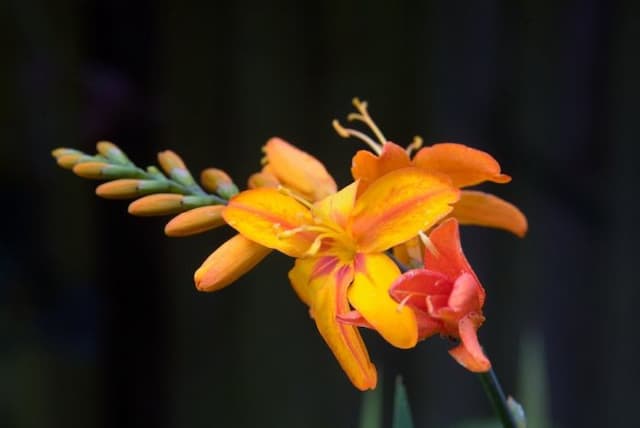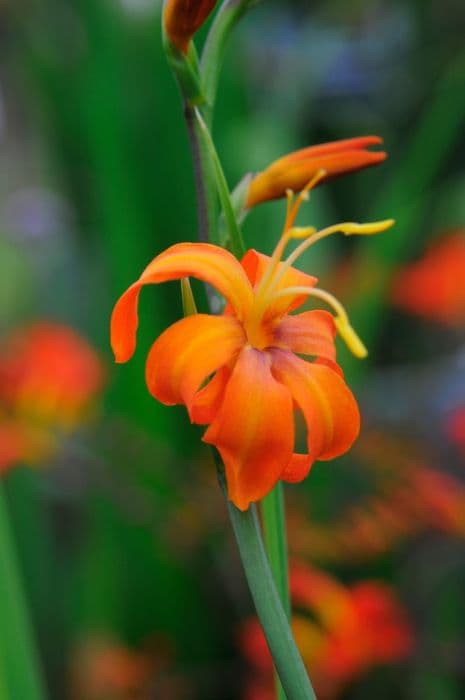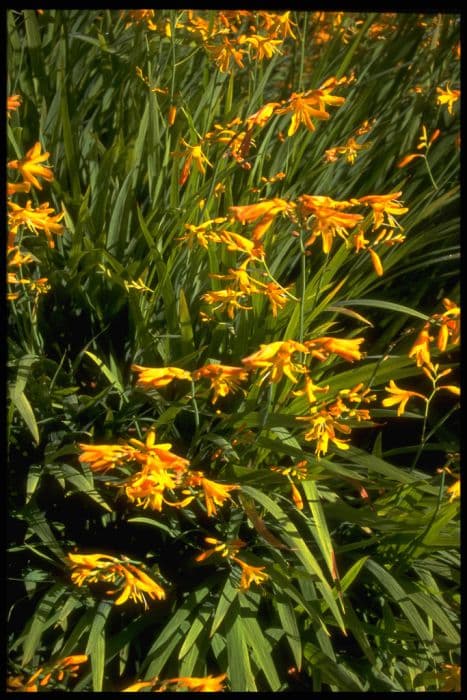New Zealand Iris Libertia peregrinans 'Gold Leaf'

ABOUT
Libertia peregrinans 'Gold Leaf', also known as New Zealand Iris, is an evergreen perennial known for its striking foliage and architectural form. Its leaves are sword-shaped, similar to those of irises, showcasing a vibrant, golden-yellow color that can add a luminous quality to any garden setting. This coloration is most intense during the cooler months of the year and tends to be accompanied by green to orange hues on the leaf margins, giving it a striking variegated appearance. The rigidity of the leaves allows them to form a fan-like structure, which adds texture and shape to the landscape. As the seasons change, the plant produces delicate white flowers that create a soft contrast against the bold foliage. These flowers appear on slender, stiff stems rising above the foliage, looking like small stars scattered throughout the clump of golden leaves. After the blooming period, the plant develops seed pods that also hold an ornamental value. Overall, the contrast between the golden-yellow leaves and the white flowers contributes to the New Zealand Iris's charm, making it a distinctive choice for gardeners looking to add a splash of color and interest to their plant compositions.
About this plant
 Names
NamesFamily
Iridaceae
Synonyms
New Zealand Iris, Golden Grass, Brass Libertia
Common names
Libertia peregrinans 'Gold Leaf'.
 Toxicity
ToxicityTo humans
The New Zealand Iris, including the 'Gold Leaf' variety, is generally considered non-toxic to humans. There are no well-documented cases or widespread reports of toxicity associated with this plant. Therefore, ingesting parts of the New Zealand Iris is not commonly associated with any poisoning symptoms or adverse health consequences for humans.
To pets
The New Zealand Iris is also generally recognized as non-toxic to pets. It is not known to cause poisoning in animals such as cats and dogs. As a result, the ingestion of parts of the New Zealand Iris does not typically lead to symptoms of poisoning or significant health issues in pets. However, it is always prudent to monitor pets for any adverse reactions if they consume plant material, as individual sensitivities can vary.
 Characteristics
CharacteristicsLife cycle
Perennials
Foliage type
Evergreen
Color of leaves
Gold
Flower color
White
Height
2 feet [60 cm]
Spread
2 feet [60 cm]
Plant type
Herb
Hardiness zones
8
Native area
New Zealand
Benefits
 General Benefits
General Benefits- Visual Interest: With its striking golden-yellow foliage, Libertia peregrinans 'Gold Leaf' adds a vibrant splash of color to any garden or landscape.
- Durable: It is a hardy plant that can withstand a variety of conditions, making it ideal for gardeners of all experience levels.
- Drought-Tolerant: Once established, this plant has low water requirements, suitable for xeriscaping or areas with water restrictions.
- Low Maintenance: Requires minimal care once established, making it an attractive option for busy gardeners.
- Year-Round Interest: Provides visual interest throughout the year, with its evergreen foliage and attractive seed heads that persist into fall or winter.
- Wildlife Friendly: The flowers can attract pollinators such as bees, while the seeds may attract birds.
- Erosion Control: Its root system helps stabilize soil, making it useful for planting on slopes or in areas prone to erosion.
- Container Gardening: Well-suited to container planting, allowing it to be featured on patios, balconies, or in small gardens.
- Landscape Versatility: Can be used in a variety of landscape designs, from contemporary to traditional.
 Medical Properties
Medical PropertiesThis plant is not used for medical purposes.
 Air-purifying Qualities
Air-purifying QualitiesThis plant is not specifically known for air purifying qualities.
 Other Uses
Other Uses- Photography Prop: Libertia peregrinans, also known as New Zealand Iris, with its distinctive gold-striped foliage, can serve as an attractive, contrasting background or subject in plant photography.
- Educational Tool: Horticulture and botany teachers may use New Zealand Iris to show students an example of plant adaptation and variegation in foliage.
- Artistic Inspiration: Artists may draw inspiration from the striking form and color of New Zealand Iris for various forms of art including paintings, illustrations, and fabric designs.
- Culinary Garnish: While not commonly used for consumption, the leaves could potentially be used as a decorative, non-toxic garnish for plating dishes in high-end culinary presentations.
- Dye Source: Crafters might experiment with the leaves to create natural dyes for textiles, based on the gold and green pigmentation of the leaves.
- Seasonal Decoration: The foliage of New Zealand Iris can be included in autumnal decorations and floral arrangements to add a unique splash of color.
- Themed Gardens: Can be used in 'gold-themed' gardens to maintain a consistent color palette or in patriotic gardens that feature the colors of a nation's flag.
- Living Mulch: The dense growth habit of New Zealand Iris can be utilized to suppress weeds, functioning as a living mulch in garden beds and landscapes.
- Environmental Education: Can be included in lessons about the importance of native plants in gardening and landscaping to promote local biodiversity.
- Bonsai Crafting: While not traditional, the structured growth pattern of New Zealand Iris might lend itself to being trained as a form of bonsai for enthusiasts looking for unusual subjects.
Interesting Facts
 Feng Shui
Feng ShuiNew Zealand Iris is not used in Feng Shui practice.
 Zodiac Sign Compitability
Zodiac Sign CompitabilityNew Zealand Iris is not used in astrology practice.
 Plant Symbolism
Plant Symbolism- Endurance: Libertia peregrinans, commonly known as New Zealand Iris, has a resilient nature that represents endurance, due to its ability to thrive in various conditions.
- Independence: The plant's name "peregrinans," which means "wandering," symbolizes an independent spirit and the ability to go about one's own way in life.
- Purity: The white blossoms of the New Zealand Iris are often associated with purity, virtue, and innocence.
 Water
WaterNew Zealand Iris should be watered deeply but infrequently, allowing the soil to dry out slightly between waterings. In general, aim to water every 7 to 10 days, adjusting for rainfall and changes in temperature which may necessitate more frequent watering during hot, dry periods, or less during cooler, wetter conditions. Use about 1 gallon of water per plant for each watering session to ensure the root zone is thoroughly moistened. Always avoid overhead watering to keep the foliage dry and prevent fungal diseases.
 Light
LightNew Zealand Iris thrives in full sun to partial shade. The ideal spot for this plant is where it can receive at least six hours of sunlight daily. However, it is tolerant of light shade and would benefit from some afternoon protection from the harsh sun in very hot climates, ensuring the leaves do not scorch.
 Temperature
TemperatureNew Zealand Iris prefers temperate climates with temperatures ranging between 20°F and 85°F. It can survive minimal temperatures of about 10°F but sustained cold may harm the plant. The ideal temperature range for fostering healthy growth is between 60°F and 75°F.
 Pruning
PruningPruning New Zealand Iris is beneficial to remove dead leaves and spent flower stalks, which encourages new growth and maintains the plant's appearance. Pruning is best done in late winter or early spring before new growth begins. Annually thinning out some of the older foliage can also promote air circulation and reduce disease risk.
 Cleaning
CleaningAs needed
 Soil
SoilNew Zealand Iris (Libertia peregrinans 'Gold Leaf') thrives in well-drained soil with a compost-rich mix; optimal pH is slightly acidic to neutral, from 5.5 to 7.0. Incorporating organic matter such as well-rotted manure or garden compost can improve the soil structure and fertility, benefiting plant growth and vigor.
 Repotting
RepottingNew Zealand Iris should generally be repotted every two to three years to refresh the soil and allow for root growth. Avoid frequent repotting as this can disturb the roots and slow the growth of the plant.
 Humidity & Misting
Humidity & MistingNew Zealand Iris prefers moderate humidity levels but is adaptable and can tolerate a range of humidity conditions, making it quite hardy and suitable for varied garden settings.
 Suitable locations
Suitable locationsIndoor
Place in bright, indirect light and well-drained soil.
Outdoor
Plant in sunny spot with well-drained soil; mulch.
Hardiness zone
8-10 USDA
 Life cycle
Life cycleLibertia peregrinans 'Gold Leaf', commonly known as New Zealand Iris, begins its life cycle with seed germination, which typically occurs in spring. Once sprouted, the seedling grows into a clump-forming perennial, forming narrow, upright, gold-striped green leaves. In maturity, the plant reaches flowering stage, usually in late spring to early summer, producing small, striking white flowers at the ends of long, rigid stems. Following pollination, these flowers develop into small capsules containing numerous seeds, ensuring the propagation of the species. As autumn approaches, the foliage may take on orange to bronze hues, adding seasonal interest. The plant then enters a period of dormancy during the winter months, though in milder climates, it may retain much of its foliage year-round, before resuming growth in the following spring.
 Propogation
PropogationPropogation time
Spring-Early Summer
The Libertia peregrinans 'Gold Leaf' or New Zealand iris is often propagated by division, which is the most popular method for this plant. The best time to divide New Zealand iris is in early spring or fall when the plant is not in active growth. To propagate by division, carefully dig up the plant and gently separate the rhizomes, ensuring that each division has at least one growth point. Replant the divisions immediately at the same depth they were growing at originally, spacing them about 12 inches (approximately 30 centimeters) apart to allow sufficient room for growth. Water the new plants thoroughly to help establish them. It's important that the soil is well-draining to prevent root rot. Through division, New Zealand iris can quickly establish themselves and spread, creating robust new plants that will develop and flower in the following seasons.
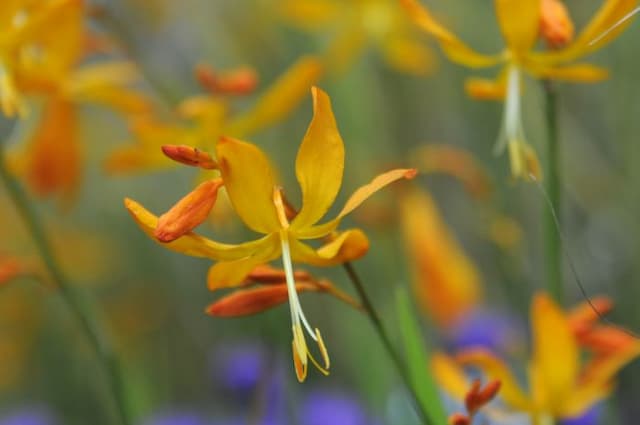
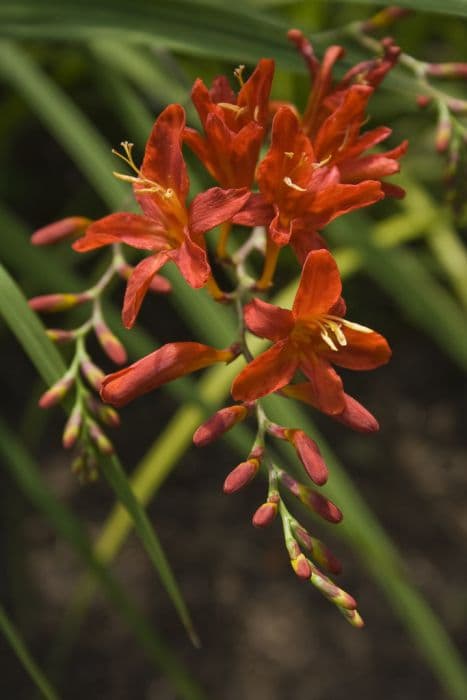
![Montbretia [Bright Eyes]](/_next/image?url=https%3A%2F%2Fplants-admin.emdemapps.com%2Fimages%2Fplants%2F%2Fimages%2F604b5f4a483b6.png&w=640&q=75)
